
Gabriella Maria's Charming Provencal Culinary and Culture Retreat
 8 Day Tour of Aix en Provence
8 Day Tour of Aix en Provence
Overview
Trip Map
Itinerary
Inclusions
Reviews







8 Days 7 Nights
Best Time: Jan-Dec
Local Cuisine & Wine
Exploring Scenic Countryside
Embark on a Provençal adventure designed by France expert Gabriella Maria. You’ll enjoy private guided tours revealing the secrets of local wine and cuisine, and engage in hands-on cooking and pastry classes. You’ll also take a private guided culinary excursion to the enchanting Luberon Valley, and visit Marseille, a fascinating city of history and seaside beauty. You can travel independently on a departure date or your choice, or join Gabriella from May 4th to 11th. Those that travel will stay in a stunning and historic Provencal villa, complete with a pool and a breathtaking garden setting on the outskirts of Aix.
- Taste the essence of the region on a Gourmet Tour of Aix and South Luberon.
- Explore the town that inspired the rich palette of Cézanne on a private walking tour in Aix.
- Savor the flavors of Provence with a wine tasting in a scenic countryside setting.
- Unleash your inner chef in hands-on Provencal cooking and pastry classes.
- Take a day trip to Marseille to see historic forts, vibrant Vieux Port, and scenic seaside views.
Embark on a Provençal adventure designed by France expert Gabriella Maria. You’ll enjoy private guided tours revealing the secrets of local wine and cuisine, and engage in hands-on cooking and pastry classes. You’ll also take a private guided culinary excursion to the enchanting Luberon Valley, and visit Marseille, a fascinating city of history and seaside beauty. You can travel independently on a departure date or your choice, or join Gabriella from May 4th to 11th. Those that travel will stay in a stunning and historic Provencal villa, complete with a pool and a breathtaking garden setting on the outskirts of Aix.
- Taste the essence of the region on a Gourmet Tour of Aix and South Luberon.
- Explore the town that inspired the rich palette of Cézanne on a private walking tour in Aix.
- Savor the flavors of Provence with a wine tasting in a scenic countryside setting.
- Unleash your inner chef in hands-on Provencal cooking and pastry classes.
- Take a day trip to Marseille to see historic forts, vibrant Vieux Port, and scenic seaside views.

Cours Mirabeau
Markets & Shopping

Lavender Fields
Natural Beauty

Cezanne's Studio
Museums & Galleries

Luberon Villages
Small Towns

Aix-en-Provence Markets
Markets & Shopping

Paroisse Cathédrale Saint Sauveur
Churches & Monasteries
Must see sights

Cours Mirabeau
Markets & Shopping

Lavender Fields
Natural Beauty

Cezanne's Studio
Museums & Galleries

Luberon Villages
Small Towns

Aix-en-Provence Markets
Markets & Shopping

Paroisse Cathédrale Saint Sauveur
Churches & Monasteries
Starting from
$3325
per person
 Not included
Not included Secure Your Customizable Trip
Enter your details to embark on a journey that can be tailored just for you.
Start
Travelers
0 travelers
Add Room
Remove Room
Preferred Hotel Stars
Select Hotel Stars
Craft Your Own Itinerary
Select your interests and destinations for a trip plan inspired by you.
Provence’s Charming Escape Trip - Map & Itinerary
Enable/Disable Map Scrolling
Click To Make Map Interactive

Provence’s Charming Escape Trip Timeline
 Edit Details
Edit DetailsArrival
7 nights
Aix en Provence
France
Departure
Day-By-Day Itinerary of Provence’s Charming Escape Trip
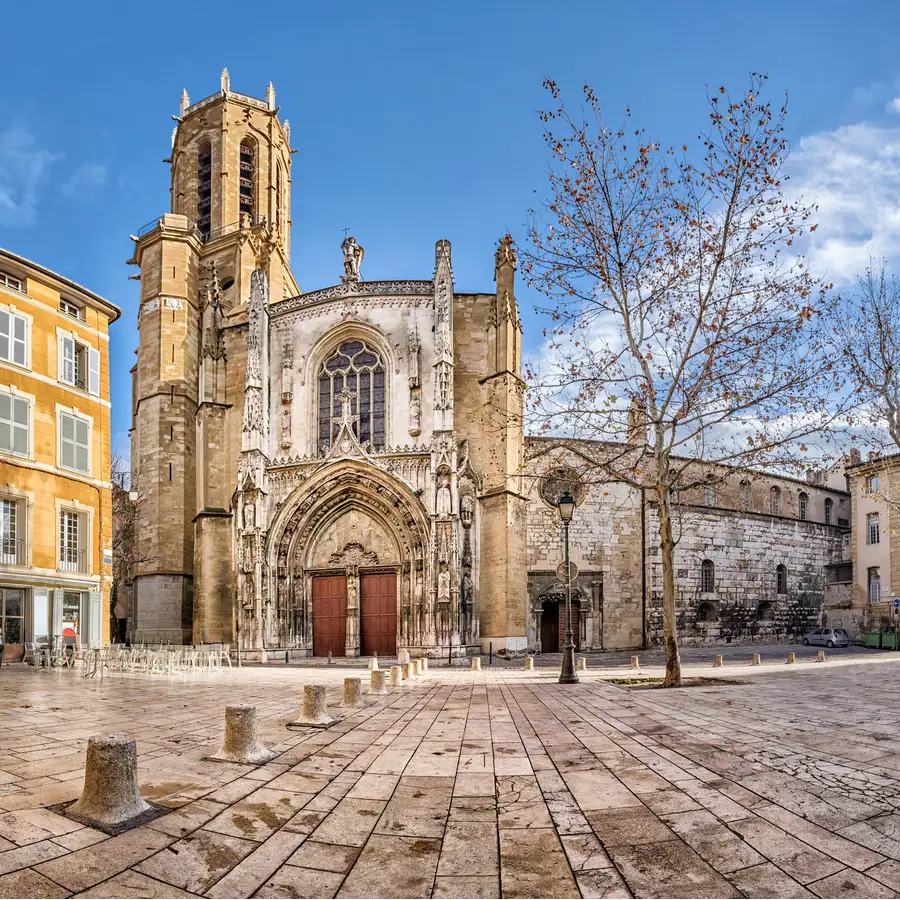
Day 1
Arrive Aix en Provence
Day 1
Arrive Aix en Provence


To Be Determined
Marseille Airport Pickup
We will schedule a pick up for 20 minutes after your flight's arrival time. You will be met in the terminal by an English-speaking driver holding a sign with your name on it. The ride is for your party only - you will not be sharing a vehicle. The cost of the ride will be included in your itinerary package. IMPORTANT NOTE: Please be aware the car service can fit up to 1 checked item of luggage and 1 personal item per person, such as a purse or small backpack. If you think you will have more baggage, please inform your travel consultant as this may result in an additional fee.

Day 1
Arrive Aix en Provence


Day 1
Arrive Aix en Provence



To Be Determined:
Marseille Airport Pickup
Late Afternoon/Early Evening:
Self Guided, Old Town

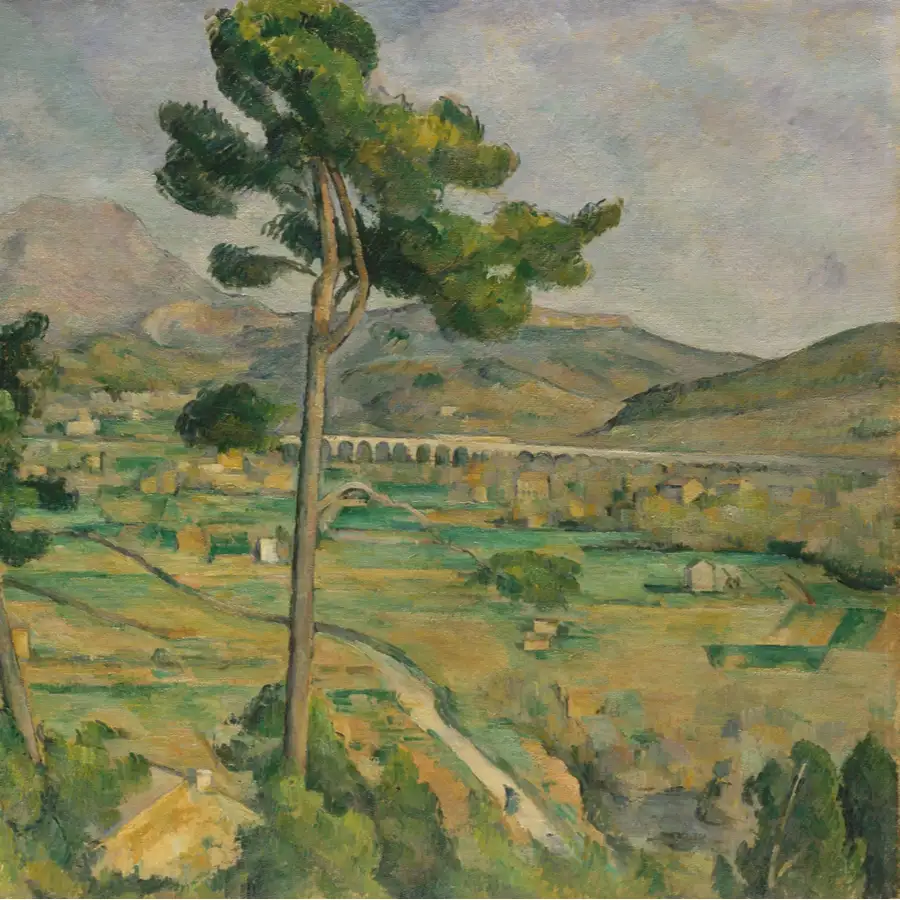
Day 2
Aix en Provence
Day 2
Aix en Provence



Afternoon/Late Afternoon
Cezanne Walk
Follow the path of the French artist, Paul Cézanne on this self-guided walk through the city. Sometimes considered the father of modern art because of his paintings structured from geometric shapes and his emphasis on light and color, his symapthetic story and character make this walk an exceptional way to spend one's time. See the places where the artist studied, lived, and worked as you explore museums housing his artwork and visit the studio in which this master painted.

Dernier Appartement de Cézzane
Pass This Last Home that Cezzane Lived in as a Celebrated and Reviled Member of the Community.
Show More

Cézanne Studio
Discover Cézzane's atelier just north of the old city that let him paint in solitude.
Show More

Paul Cézanne Statue
Say Hello to One of Aix's Most Lauded Residents...
Show More

Dernier Appartement de Cézzane
Pass This Last Home that Cezzane Lived in as a Celebrated and Reviled Member of the Community.
Show More

Cézanne Studio
Discover Cézzane's atelier just north of the old city that let him paint in solitude.
Show More

Paul Cézanne Statue
Say Hello to One of Aix's Most Lauded Residents...
Show More

Dernier Appartement de Cézzane
Pass This Last Home that Cezzane Lived in as a Celebrated and Reviled Member of the Community.
Show More
prev
next

Day 2
Aix en Provence

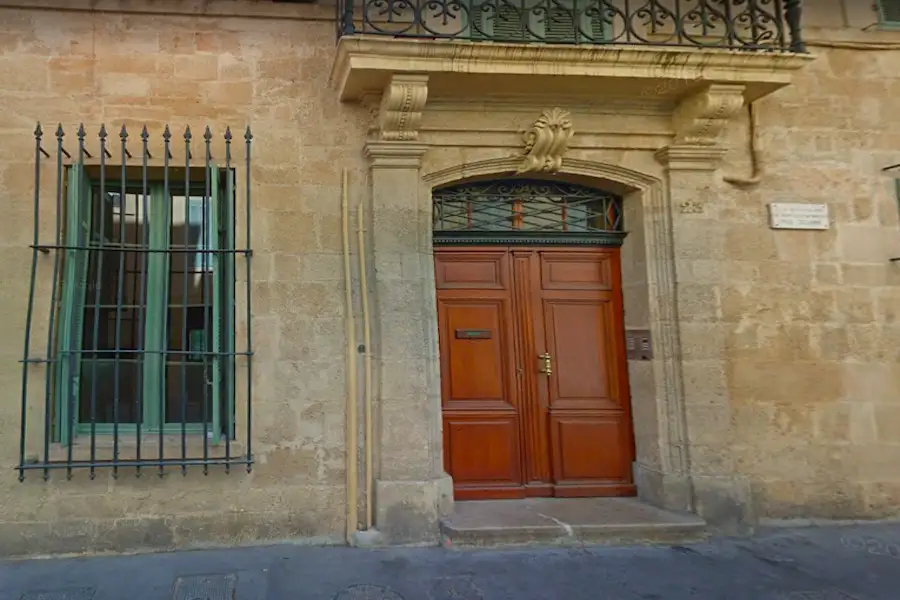
Dernier Appartement de Cézzane
 Highlight of Cezanne Walk
Highlight of Cezanne WalkPass This Last Home that Cezzane Lived in as a Celebrated and Reviled Member of the Community.
Look up to see the large windows that Cezanne had installed on the north side of the apartment so that he would have the correct lighting to paint in his home. One 23 October 1906, Cezanne died here of pleurisy.

Cézanne Studio
 Highlight of Cezanne Walk
Highlight of Cezanne WalkDiscover Cézzane's atelier just north of the old city that let him paint in solitude.
The studio, known as the "Atelier de Cézanne," allows visitors to step into the very space where Cézanne created some of his last and most acclaimed works. Preserved much as it was during the artist's life, the space is filled with his personal belongings, painting equipment, and the serene light that inspired his revolutionary approach to color and composition. This intimate setting, nestled amidst the Provençal landscape that Cézanne so often depicted, provides a profound insight into the artist's creative process and his enduring legacy in art.

Paul Cézanne Statue
 Highlight of Cezanne Walk
Highlight of Cezanne WalkSay Hello to One of Aix's Most Lauded Residents...
In Paul Cézzane's later life he took up residence in Aix, but throughout his career, the nearby Mont Ste. Victoire remained a great, prehaps his greatest, muse. This statue pays respect to this master Impressionist, and invites you to explore his life here.

Dernier Appartement de Cézzane
 Highlight of Cezanne Walk
Highlight of Cezanne WalkPass This Last Home that Cezzane Lived in as a Celebrated and Reviled Member of the Community.
Look up to see the large windows that Cezanne had installed on the north side of the apartment so that he would have the correct lighting to paint in his home. One 23 October 1906, Cezanne died here of pleurisy.

Cézanne Studio
 Highlight of Cezanne Walk
Highlight of Cezanne WalkDiscover Cézzane's atelier just north of the old city that let him paint in solitude.
The studio, known as the "Atelier de Cézanne," allows visitors to step into the very space where Cézanne created some of his last and most acclaimed works. Preserved much as it was during the artist's life, the space is filled with his personal belongings, painting equipment, and the serene light that inspired his revolutionary approach to color and composition. This intimate setting, nestled amidst the Provençal landscape that Cézanne so often depicted, provides a profound insight into the artist's creative process and his enduring legacy in art.

Paul Cézanne Statue
 Highlight of Cezanne Walk
Highlight of Cezanne WalkSay Hello to One of Aix's Most Lauded Residents...
In Paul Cézzane's later life he took up residence in Aix, but throughout his career, the nearby Mont Ste. Victoire remained a great, prehaps his greatest, muse. This statue pays respect to this master Impressionist, and invites you to explore his life here.

Dernier Appartement de Cézzane
 Highlight of Cezanne Walk
Highlight of Cezanne WalkPass This Last Home that Cezzane Lived in as a Celebrated and Reviled Member of the Community.
Look up to see the large windows that Cezanne had installed on the north side of the apartment so that he would have the correct lighting to paint in his home. One 23 October 1906, Cezanne died here of pleurisy.
prev
next

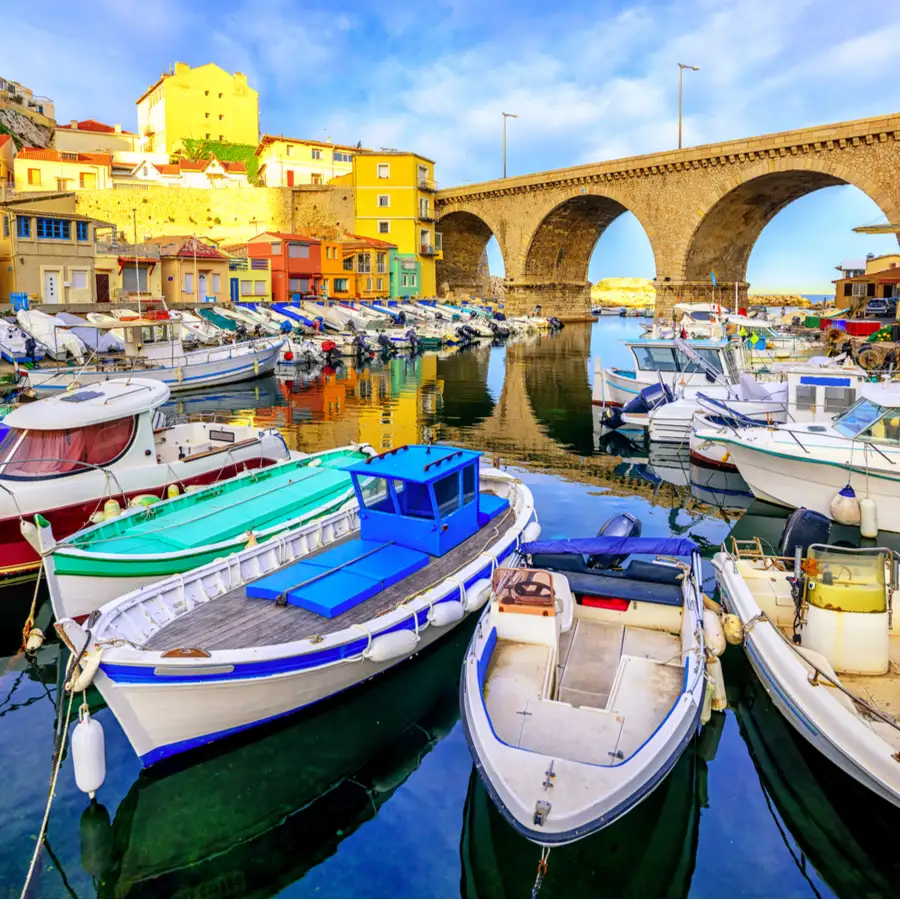
Day 3
Aix en Provence
Day 3
Aix en Provence

Early Morning to Early Evening
Excursion to Marseille
Greeks settled here in 600BC, and the port hasn't stopped since. Walk through at least 2600 years of history, try fresh fish, and get a feel for a French city that revels in its distance (geographically, culturally, gastronomically) from Paris. Grittier, louder, but no less charming, Marseille will pleasantly shock you with its energy and breathtaking panoramas of itself and the Mediterranean sea. And should you long for the crash of waves upon cliffs, the inestimably beautiful National Park of the Calanques.

Marseille - Vieux Port
Walk in the Footsteps of Ancient Greeks at This 2600-year-old Port
Show More

Marseille Notre Dame
Take a Short Pilgrimage, If Just for the Views!
Show More

Marseille MuCEM
Dive into the Cultures of the Mediterranean Sea
Show More

Marseille - Vieux Port
Walk in the Footsteps of Ancient Greeks at This 2600-year-old Port
Show More

Marseille Notre Dame
Take a Short Pilgrimage, If Just for the Views!
Show More

Marseille MuCEM
Dive into the Cultures of the Mediterranean Sea
Show More

Marseille - Vieux Port
Walk in the Footsteps of Ancient Greeks at This 2600-year-old Port
Show More
prev
next

Day 3
Aix en Provence

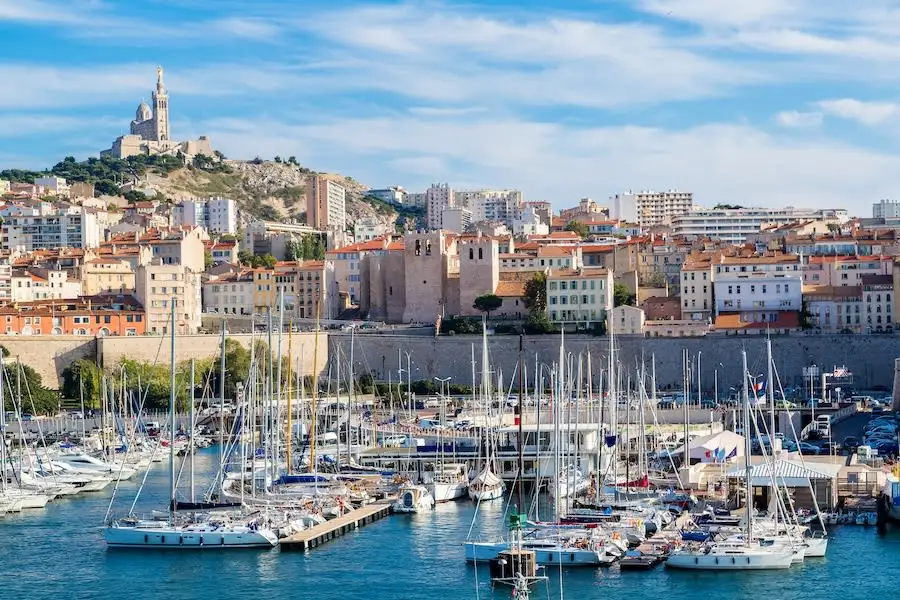
Marseille - Vieux Port
 Highlight of Excursion to Marseille
Highlight of Excursion to MarseilleWalk in the Footsteps of Ancient Greeks at This 2600-year-old Port
The Vieux Port of Marseille is, in a sense, where France began its long march through Western Civilization, as Greek settlers arrived here in 600BC. Since that time at least, it has been a port, with countless ships arriving and countless feet stepping upon its piers. Surrounded by historic fortifications, such as Fort Saint-Nicolas and Fort Saint-Jean, the port today is as it has often been, a lively area filled with fishing boats, yachts, and vessels of all sizes. Visitors can stroll along the quayside, indulge in seafood at the numerous restaurants, or simply enjoy the panoramic views of the Mediterranean Sea. The daily fish market on the Quai des Belges offers a glimpse into the port's bustling trade activities.

Marseille Notre Dame
 Highlight of Excursion to Marseille
Highlight of Excursion to MarseilleTake a Short Pilgrimage, If Just for the Views!
The basillica of Notre-Dame de la Garde, often referred to as "La Bonne Mère," keeps its protective watch over the city. This iconic symbol, situated on a limestone outcrop, offers panoramic views of Marseille and the Mediterranean Sea. Known for its mix of Romanesque and Byzantine styles, the basilica boasts intricate mosaics and a prominent golden statue of the Virgin Mary on its bell tower. It is a place of pilgrimage and reflection.

Marseille MuCEM
 Highlight of Excursion to Marseille
Highlight of Excursion to MarseilleDive into the Cultures of the Mediterranean Sea
The MuCEM (Musée des Civilisations de l'Europe et de la Méditerranée) in Marseille stands as a monumental celebration of Mediterranean cultures, seamlessly blending contemporary architecture with centuries-old heritage. Situated at the waterfront, this striking museum designed by architect Rudy Ricciotti, connected to the historic Fort Saint-Jean by an elegant footbridge, invites exploration into the diverse and complex tapestry of Mediterranean civilizations. Through its innovative exhibitions, the MuCEM profoundly investigates the historical, cultural, and social dynamics of the Mediterranean region through a rich collection that spans from ancient artifacts to modern art. The museum offers breathtaking views of its very subject, the Mediterranean Sea.

Marseille - Vieux Port
 Highlight of Excursion to Marseille
Highlight of Excursion to MarseilleWalk in the Footsteps of Ancient Greeks at This 2600-year-old Port
The Vieux Port of Marseille is, in a sense, where France began its long march through Western Civilization, as Greek settlers arrived here in 600BC. Since that time at least, it has been a port, with countless ships arriving and countless feet stepping upon its piers. Surrounded by historic fortifications, such as Fort Saint-Nicolas and Fort Saint-Jean, the port today is as it has often been, a lively area filled with fishing boats, yachts, and vessels of all sizes. Visitors can stroll along the quayside, indulge in seafood at the numerous restaurants, or simply enjoy the panoramic views of the Mediterranean Sea. The daily fish market on the Quai des Belges offers a glimpse into the port's bustling trade activities.

Marseille Notre Dame
 Highlight of Excursion to Marseille
Highlight of Excursion to MarseilleTake a Short Pilgrimage, If Just for the Views!
The basillica of Notre-Dame de la Garde, often referred to as "La Bonne Mère," keeps its protective watch over the city. This iconic symbol, situated on a limestone outcrop, offers panoramic views of Marseille and the Mediterranean Sea. Known for its mix of Romanesque and Byzantine styles, the basilica boasts intricate mosaics and a prominent golden statue of the Virgin Mary on its bell tower. It is a place of pilgrimage and reflection.

Marseille MuCEM
 Highlight of Excursion to Marseille
Highlight of Excursion to MarseilleDive into the Cultures of the Mediterranean Sea
The MuCEM (Musée des Civilisations de l'Europe et de la Méditerranée) in Marseille stands as a monumental celebration of Mediterranean cultures, seamlessly blending contemporary architecture with centuries-old heritage. Situated at the waterfront, this striking museum designed by architect Rudy Ricciotti, connected to the historic Fort Saint-Jean by an elegant footbridge, invites exploration into the diverse and complex tapestry of Mediterranean civilizations. Through its innovative exhibitions, the MuCEM profoundly investigates the historical, cultural, and social dynamics of the Mediterranean region through a rich collection that spans from ancient artifacts to modern art. The museum offers breathtaking views of its very subject, the Mediterranean Sea.

Marseille - Vieux Port
 Highlight of Excursion to Marseille
Highlight of Excursion to MarseilleWalk in the Footsteps of Ancient Greeks at This 2600-year-old Port
The Vieux Port of Marseille is, in a sense, where France began its long march through Western Civilization, as Greek settlers arrived here in 600BC. Since that time at least, it has been a port, with countless ships arriving and countless feet stepping upon its piers. Surrounded by historic fortifications, such as Fort Saint-Nicolas and Fort Saint-Jean, the port today is as it has often been, a lively area filled with fishing boats, yachts, and vessels of all sizes. Visitors can stroll along the quayside, indulge in seafood at the numerous restaurants, or simply enjoy the panoramic views of the Mediterranean Sea. The daily fish market on the Quai des Belges offers a glimpse into the port's bustling trade activities.
prev
next


Day 4
Aix en Provence
Day 4
Aix en Provence

9:30 AM - 6:30 PM
Gourmet Tour
Experience the best of Provence with this Gourmet Tour, including both food and wine tastings. Sample crusty bread, tapenades, rosé wines, goat cheese, and more in the evocative setting of the Luberon Valley. A special local delight is the famous candy of Aix-en-Provence: the Calisson. Made with almonds and candied fruits, its sweet tradition dates back to the 15th century. Your knowledgeable guide will explain to you the time-honored traditions and culinary processes of Provence on this full-day tour, designed to appeal to all ages.

Day 4
Aix en Provence



Day 5
Aix en Provence
Day 5
Aix en Provence

Morning to Late Afternoon
Excursion to Avignon
Avignon boasts a particular medieval history as the seat of the Roman Catholic church in the 14th century. Its grandeur, though illustrious, is tempered by the Provençal sun and wind, and the sometimes irreverent Festival d' Avignon, a summer theather event that draws crowds from all of France. Highlights of a visit include the Palais des Papes, a massive, Gothic structure fit for a pope, the Pont d' Avignon which will make you want to dan-ce, dan-ce, and les Halles, an exceptional food market with a verdant exterior.

Palais des Papes
This wasn't a home-away-from-home; this was home!
Show More

Bridge St. Bénézet (Le Pont d' Avignon)
This Bridge Doesn't Work, but Millions Have Walked upon It All the Same
Show More

Les Halles d' Avignon
Admire the living wall outside before tasting the best of Provence within.
Show More

Avignon Cathedral
This Cathedral Provides Shelter From the Heat of the Day and Many Other Respites...
Show More

Jardin des doms
Take Aristocratic Views of Provence and the Papal Palace
Show More

Palais des Papes
This wasn't a home-away-from-home; this was home!
Show More

Bridge St. Bénézet (Le Pont d' Avignon)
This Bridge Doesn't Work, but Millions Have Walked upon It All the Same
Show More

Les Halles d' Avignon
Admire the living wall outside before tasting the best of Provence within.
Show More

Avignon Cathedral
This Cathedral Provides Shelter From the Heat of the Day and Many Other Respites...
Show More

Jardin des doms
Take Aristocratic Views of Provence and the Papal Palace
Show More

Palais des Papes
This wasn't a home-away-from-home; this was home!
Show More
prev
next

Day 5
Aix en Provence

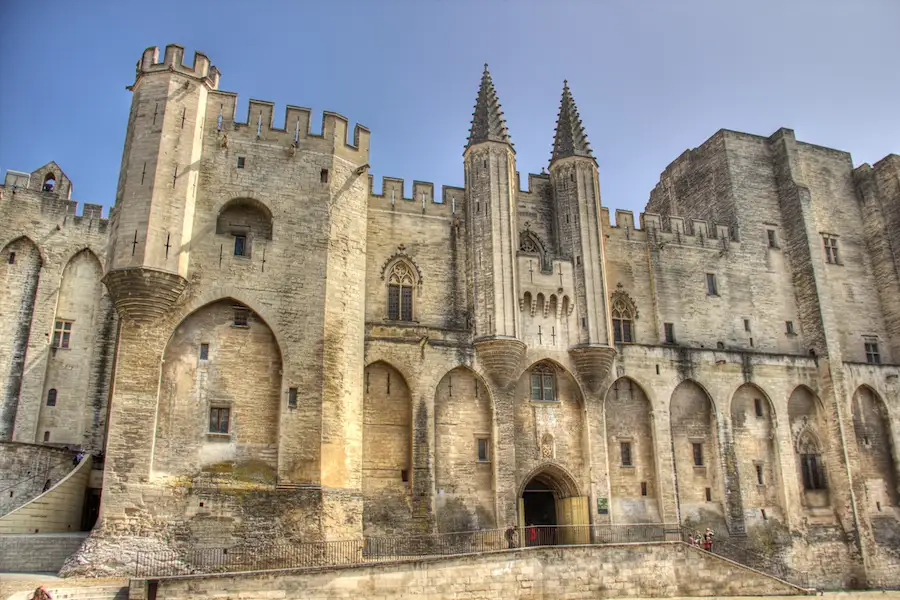
Palais des Papes
 Highlight of Excursion to Avignon
Highlight of Excursion to AvignonThis wasn't a home-away-from-home; this was home!
From 1305-1378 the Roman Catholic Church was ruled from... Avignon. Theocratic intrigue in Rome led to the move, and the popes here enjoyed relative safety, and a view of a better river (The Rhone River of Avignon is much prettier than Rome's Tiber). After St. Catherine of Siena convinced a pope to return to Rome, and the inevitable disputes ended, the palace gradually fell into disrepair, and the palace was even used as a barracks for Napoleon's armies. Today, one can marvel at the architecture, and learn a thing or two about the dramas of centuries past. A visit is a beautiful education...
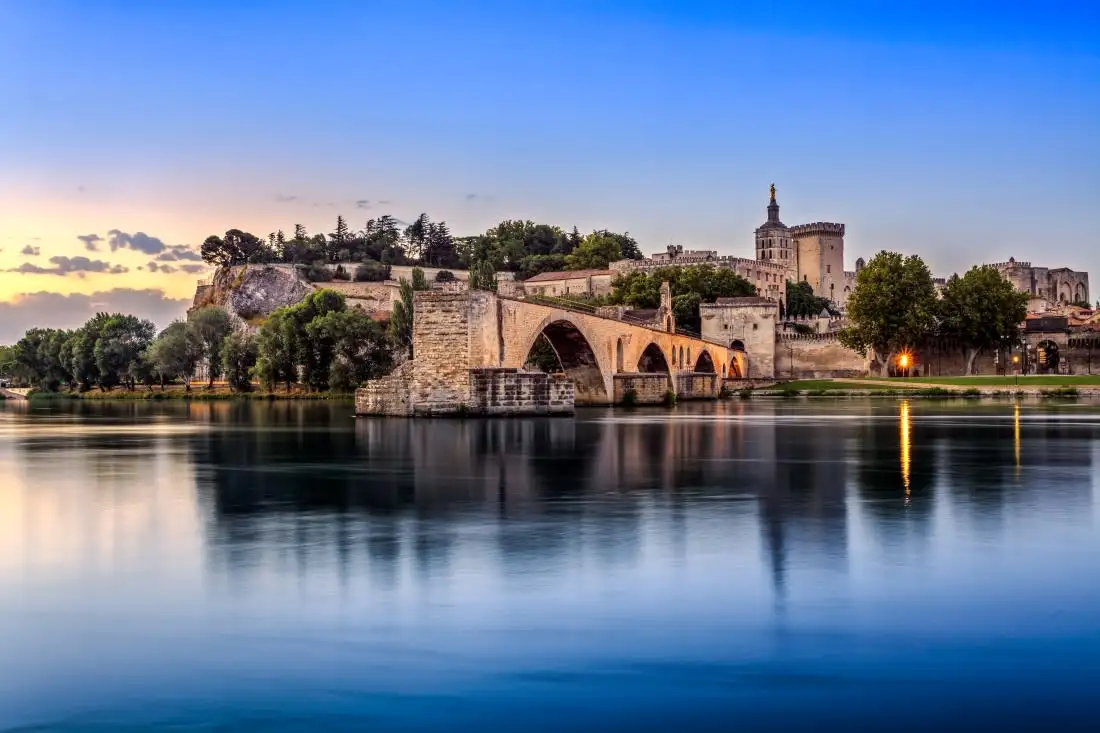
Bridge St. Bénézet (Le Pont d' Avignon)
 Highlight of Excursion to Avignon
Highlight of Excursion to AvignonThis Bridge Doesn't Work, but Millions Have Walked upon It All the Same
The St. Bénézet Bridge, known affectionately as the Pont d' Avignon (Bridge of Avignon) has spent much of its existence a ruin. From the 1200s until the 1700s, when the Rhone River flooded, it often destroyed the bridge, originally 900m (nearly 3000 feet). The city finally had enough and left it. And then it became a symbol of the city and started drawing people from around the world. Brilliant! There is something romantic to it, to walk out along it's narrow width at dusk towards the middle of the Rhone. It's so beautiful it might make you want to danse... Sur le pont d' Avignon L'on y danse, l'on y danse...

Les Halles d' Avignon
 Highlight of Excursion to Avignon
Highlight of Excursion to AvignonAdmire the living wall outside before tasting the best of Provence within.
Spend some time to assemble your own lunch or dinner with help from the sumptuous stalls at Avignon's Halles. Fruits, vegetables, cheeses and meats will all come and go with the seasons. An early spring visit here can proffer the delicious strawberries from nearrby Carpentras, and a midsummer exploration will deliver you the incomparable melon d' Cavaillon. Pair those with some jambon or a fresh Provençal goat cheese, pick up a bottle of rose from Tavel, and you are well on your way to gourmet heaven!

Avignon Cathedral
 Highlight of Excursion to Avignon
Highlight of Excursion to AvignonThis Cathedral Provides Shelter From the Heat of the Day and Many Other Respites...
... Dating back to the 12th century, this Romanesque cathedral is renowned for its striking architectural features, including a beautifully decorated facade and a prominent gold-leaf statue of the Virgin Mary that crowns its bell tower. Inside, the cathedral houses an array of religious art, significant ecclesiastical items, and the tombs of several Avignon popes, reflecting its central role in the history of the Avignon Papacy. But given that history, a simplicity remains, a elegance hard-won through trials and tribulations.

Jardin des doms
 Highlight of Excursion to Avignon
Highlight of Excursion to AvignonTake Aristocratic Views of Provence and the Papal Palace
Perched atop a rocky outcrop, Le Jardin des Doms overlooks The Palais des Papes and Notre Dame (of Avignon, mind you) on one side and panoramas of the Provençal countryside on the other. Established in the 19th century, this verdant park is a welcomed retreat within the walled city with its limestone pathways, majestic trees, and tranquil ponds. These elements add to the cool and restful atmosphere of the park.

Palais des Papes
 Highlight of Excursion to Avignon
Highlight of Excursion to AvignonThis wasn't a home-away-from-home; this was home!
From 1305-1378 the Roman Catholic Church was ruled from... Avignon. Theocratic intrigue in Rome led to the move, and the popes here enjoyed relative safety, and a view of a better river (The Rhone River of Avignon is much prettier than Rome's Tiber). After St. Catherine of Siena convinced a pope to return to Rome, and the inevitable disputes ended, the palace gradually fell into disrepair, and the palace was even used as a barracks for Napoleon's armies. Today, one can marvel at the architecture, and learn a thing or two about the dramas of centuries past. A visit is a beautiful education...

Bridge St. Bénézet (Le Pont d' Avignon)
 Highlight of Excursion to Avignon
Highlight of Excursion to AvignonThis Bridge Doesn't Work, but Millions Have Walked upon It All the Same
The St. Bénézet Bridge, known affectionately as the Pont d' Avignon (Bridge of Avignon) has spent much of its existence a ruin. From the 1200s until the 1700s, when the Rhone River flooded, it often destroyed the bridge, originally 900m (nearly 3000 feet). The city finally had enough and left it. And then it became a symbol of the city and started drawing people from around the world. Brilliant! There is something romantic to it, to walk out along it's narrow width at dusk towards the middle of the Rhone. It's so beautiful it might make you want to danse... Sur le pont d' Avignon L'on y danse, l'on y danse...

Les Halles d' Avignon
 Highlight of Excursion to Avignon
Highlight of Excursion to AvignonAdmire the living wall outside before tasting the best of Provence within.
Spend some time to assemble your own lunch or dinner with help from the sumptuous stalls at Avignon's Halles. Fruits, vegetables, cheeses and meats will all come and go with the seasons. An early spring visit here can proffer the delicious strawberries from nearrby Carpentras, and a midsummer exploration will deliver you the incomparable melon d' Cavaillon. Pair those with some jambon or a fresh Provençal goat cheese, pick up a bottle of rose from Tavel, and you are well on your way to gourmet heaven!

Avignon Cathedral
 Highlight of Excursion to Avignon
Highlight of Excursion to AvignonThis Cathedral Provides Shelter From the Heat of the Day and Many Other Respites...
... Dating back to the 12th century, this Romanesque cathedral is renowned for its striking architectural features, including a beautifully decorated facade and a prominent gold-leaf statue of the Virgin Mary that crowns its bell tower. Inside, the cathedral houses an array of religious art, significant ecclesiastical items, and the tombs of several Avignon popes, reflecting its central role in the history of the Avignon Papacy. But given that history, a simplicity remains, a elegance hard-won through trials and tribulations.

Jardin des doms
 Highlight of Excursion to Avignon
Highlight of Excursion to AvignonTake Aristocratic Views of Provence and the Papal Palace
Perched atop a rocky outcrop, Le Jardin des Doms overlooks The Palais des Papes and Notre Dame (of Avignon, mind you) on one side and panoramas of the Provençal countryside on the other. Established in the 19th century, this verdant park is a welcomed retreat within the walled city with its limestone pathways, majestic trees, and tranquil ponds. These elements add to the cool and restful atmosphere of the park.

Palais des Papes
 Highlight of Excursion to Avignon
Highlight of Excursion to AvignonThis wasn't a home-away-from-home; this was home!
From 1305-1378 the Roman Catholic Church was ruled from... Avignon. Theocratic intrigue in Rome led to the move, and the popes here enjoyed relative safety, and a view of a better river (The Rhone River of Avignon is much prettier than Rome's Tiber). After St. Catherine of Siena convinced a pope to return to Rome, and the inevitable disputes ended, the palace gradually fell into disrepair, and the palace was even used as a barracks for Napoleon's armies. Today, one can marvel at the architecture, and learn a thing or two about the dramas of centuries past. A visit is a beautiful education...
prev
next


Day 6
Aix en Provence
Day 6
Aix en Provence

10:00 AM - 6:00 PM
Mediterranean Wine Tour
Good wine has been a tradition here for thousands of years; taste that history on this day-long excursion to Bandol and Cassis. These towns and their epoymous regions will prove that both red and white grapes can adapt to hot weather and still make elegant wines. Bandol reds, made primarily from the rugged grape Mouvedre, will suprise you with their depth, while Cassis whites will echo the tastes and light of the Mediterranean near which their vines grow. Your guide will be happy to go as deeply into the wines' stories as possible, or simply let you taste soemthing new!

Day 6
Aix en Provence



Day 7
Aix en Provence
Day 7
Aix en Provence

9:00 AM - 12:00 PM
Pastry Baking
Immerse yourself in the delightful world of French pastry making with this 3-hour course in Aix-en-Provence. Learn the art of crafting perfect French pastries from an expert chef in a cozy, well-equipped kitchen. This experience offers a hands-on approach, allowing you to create and taste a variety of traditional pastries from Provence and other parts of France. Ideal for culinary enthusiasts and those looking to add a unique twist to their visit to Aix-en-Provence, this baking course provides not only new skills but also delicious memories.

Day 7
Aix en Provence



Day 8
Depart Aix en Provence
Day 8
Depart Aix en Provence

To Be Determined
Marseilles Airport Dropoff by Taxi
Aix en Provence taxis are generally reliable and honest, so taking a taxi is cheaper than a pre-arranged transfer. Your hotel will be happy to arrange a pick up for you. If you are picked up about 2 hours and 45 min before your departure time, you should arrive at the airport with just under two and a half hours to spare. If you are leaving during rush hour, you may want to budget an extra twenty minutes or so. The Full Itinerary also contains alternative instructions on taking the train or metro to the airport.

Day 8
Depart Aix en Provence


What's Included In Provence’s Charming Escape Trip

Pre-Paid Tours and Activities:
- Small Group Wine Tasting of Provencal Wines
- 3.5-Hour Provencal Cooking Class
- Private Gourmet Tour of Aix en Provence and South Luberon
- Private wine tour in Cassis & Bandol
- 3-Hour Provencal Pastry Baking Experience

Go Real Travel Mobile App:
- Itinerary Plan & Reservations Info
- Points of Interest
- Detailed Travel Information
- Maps & Directions
Other Trips You May Like

4 Days
From$699USD

5 Days
From$1700USD

4 Days
From$949USD

7 Days
From$2299USD

15 Days
From$3990USD

4 Days
From$897USD

5 Days
From$700USD

4 Days
From$775USD

7 Days
From$1995USD

4 Days
From$699USD

5 Days
From$1700USD

4 Days
From$949USD

7 Days
From$2299USD

15 Days
From$3990USD

4 Days
From$897USD

5 Days
From$700USD

4 Days
From$775USD

7 Days
From$1995USD
prev
next
Featured Blogs
prev
next
Our Customers Say It Best
Marianne Strydom, Paarl, South Africa
I just wanted to thank you for organizing an amazing trip for me – I packed in so much in such a short period of time and everything was just perfect. The way you do things makes it possible to really get to know the destination, which for me as a travel agent could not have been better. 

Otto Chuy, Los Angeles, California
I am still surprised how everything worked as planned, without a hitch. All instructions in your itinerary were precise and correct. Your suggestions and comments in each of the locations we went to were very helpful. All your guides, without exception, were wonderful and exactly on time. 

Malini Dutta, Boston, Massachusetts
We can't thank you enough for the detailed plans, maps, and suggestions. It really felt that someone was holding our hands and showing us around. We had all the excitement of discovering foreign lands, with none of the problems that can happen while negotiating unfamiliar places. In fact, all the cities felt like home within a few hours of arriving and exploring. 

Bev and Mark Frankel, Williamsburg, Virginia
We could not be more pleased with Go Real Travel! You took the guess work out of things like public transport but still managed to allow us the freedom to tour as we wanted. Our guides were exceptional and every time I saw a Viking Cruise tour of 25 people, I realized the quality experience we were getting with Go Real. 

Marianne Strydom, Paarl, South Africa
I just wanted to thank you for organizing an amazing trip for me – I packed in so much in such a short period of time and everything was just perfect. The way you do things makes it possible to really get to know the destination, which for me as a travel agent could not have been better. 

Otto Chuy, Los Angeles, California
I am still surprised how everything worked as planned, without a hitch. All instructions in your itinerary were precise and correct. Your suggestions and comments in each of the locations we went to were very helpful. All your guides, without exception, were wonderful and exactly on time. 

Malini Dutta, Boston, Massachusetts
We can't thank you enough for the detailed plans, maps, and suggestions. It really felt that someone was holding our hands and showing us around. We had all the excitement of discovering foreign lands, with none of the problems that can happen while negotiating unfamiliar places. In fact, all the cities felt like home within a few hours of arriving and exploring. 

Bev and Mark Frankel, Williamsburg, Virginia
We could not be more pleased with Go Real Travel! You took the guess work out of things like public transport but still managed to allow us the freedom to tour as we wanted. Our guides were exceptional and every time I saw a Viking Cruise tour of 25 people, I realized the quality experience we were getting with Go Real. 



Explore cities in more detail
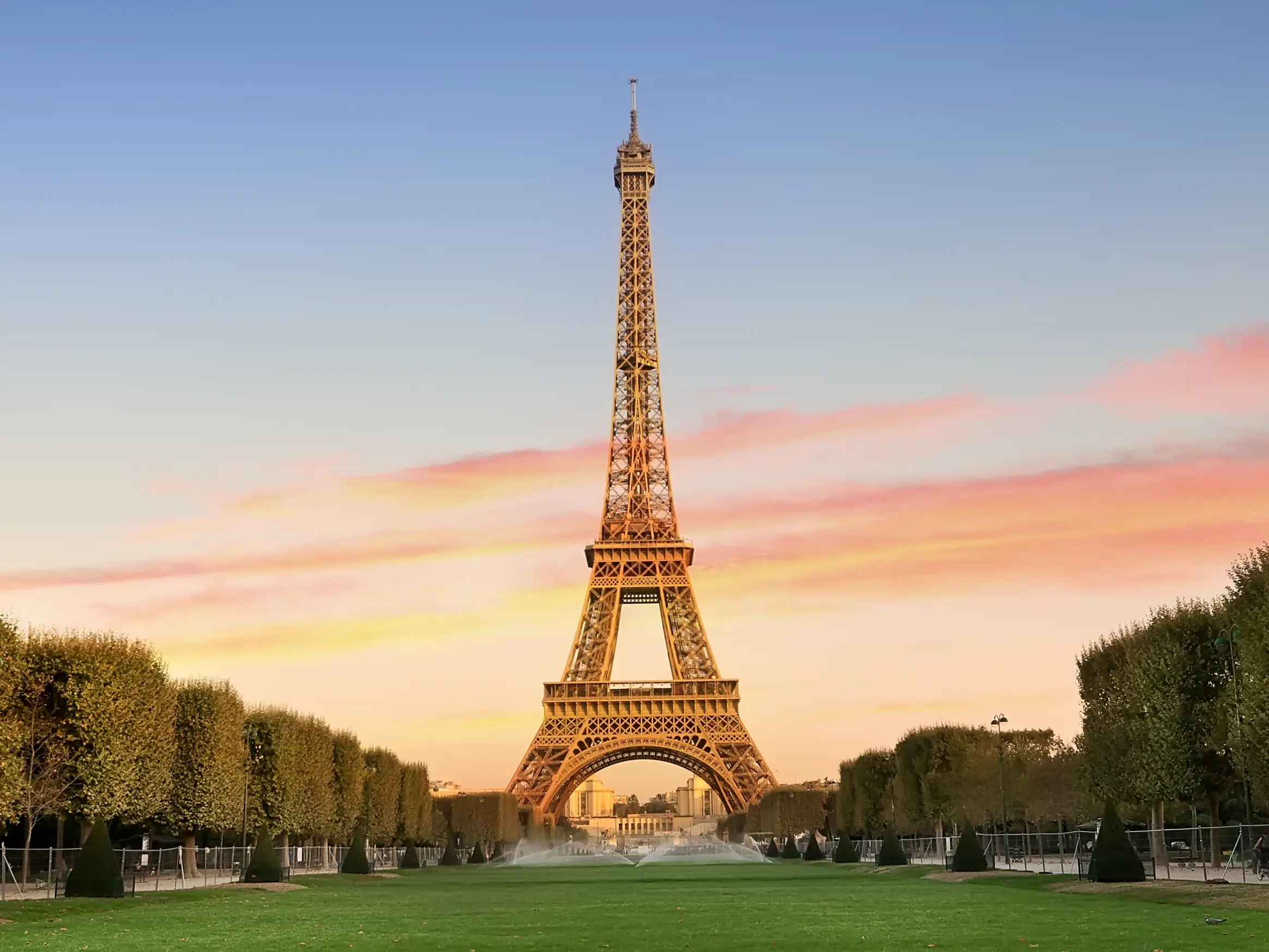
Paris
The magic of Paris is undeniable. This is the most romantic destination in Europe, and surely the number one bucket list destination of all time. If you want to say you've traveled, you have to visit Paris at least once. Along with classic must-sees like the Eiffel Tower and the Sacre-Coeur, there is so much to see and do in Paris that it helps to narrow it down by interest. Fashion and shopping enthusiast? Look no further than the Galeries Lafayette, Avenue des Champs-Élysées, or the Marais. Art aficionado? Once you're done with the Louvre, make a start on the Musée d'Orsay. History buffs won't be able to walk a block without uncovering a monument to Napoleon or Louis XIV. If you visit Paris with a foodie, be warned — you'll gaze in a lot of patisserie windows, and sample your weight in croissants. Because Paris always has so much on offer, it never grows old. At dusk, as you stroll the wide boulevards past Haussmann apartment buildings and sharply dressed Parisians, or gaze down at the city from the hill at Montmarte, you might find yourself saying 'Paris Je t' aime'. This is, after all, the City of Love.

Learn About Paris
Build Paris Trip

Nice
Nice sits at the center of the French Riviera, shaped by golden light, gentle sea breezes, and the striking blue water that frames the coastline. The long waterfront promenade forms the city’s front porch, a place where the curve of the bay, the sweep of the sky, and the shimmer of the sea create an unmistakable sense of place. The Old Town brings deeper texture with its warm-toned buildings, inviting market squares, and the scenic overlook from Castle Hill. Museums devoted to Chagall and Matisse add a thoughtful cultural layer, while beach clubs and open-air cafés reflect the city’s relaxed, Mediterranean rhythm.Nice is also a natural base for exploring the region, with simple and scenic day trips to Cannes, Antibes, and nearby hilltop villages. With its blend of coastal beauty, cultural highlights, and easy access to the wider Riviera, the city offers a bright and welcoming introduction to southern France.

Learn About Nice
Build Nice Trip
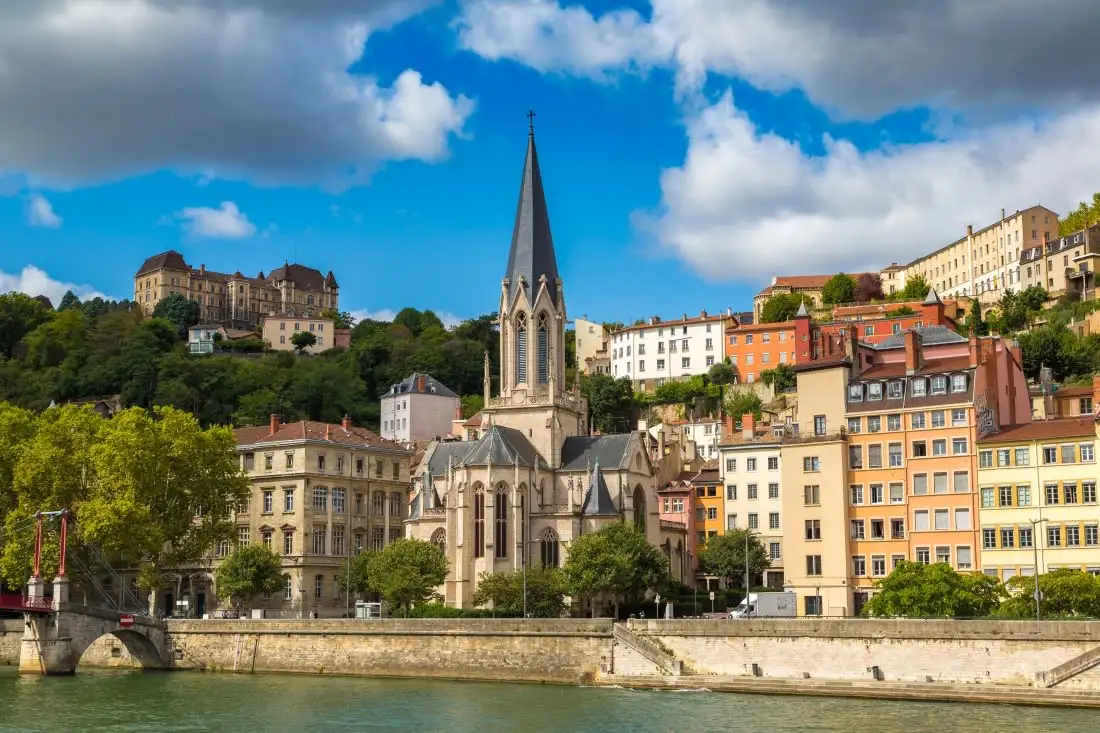
Lyon
Lyon, set at the meeting point of the Rhône and Saône rivers, is one of France’s most rewarding and underrated cities to explore. Often reached easily by train from Paris or the Alps, it’s celebrated for its food culture, lively markets, and beautiful riverside neighborhoods. Visitors can wander the Renaissance lanes of Old Vieux Lyon, climb to the hilltop Basilica of Notre-Dame de Fourvière for sweeping views, and discover the city’s hidden traboules passageways. Spend time in Presqu’île’s elegant squares, browse boutiques and cafés, or explore the revitalized Confluence district along the water. With a rich blend of history, architecture, and everyday culinary pleasures, Lyon feels both polished and welcoming without the crowds.

Learn About Lyon
Build Lyon Trip
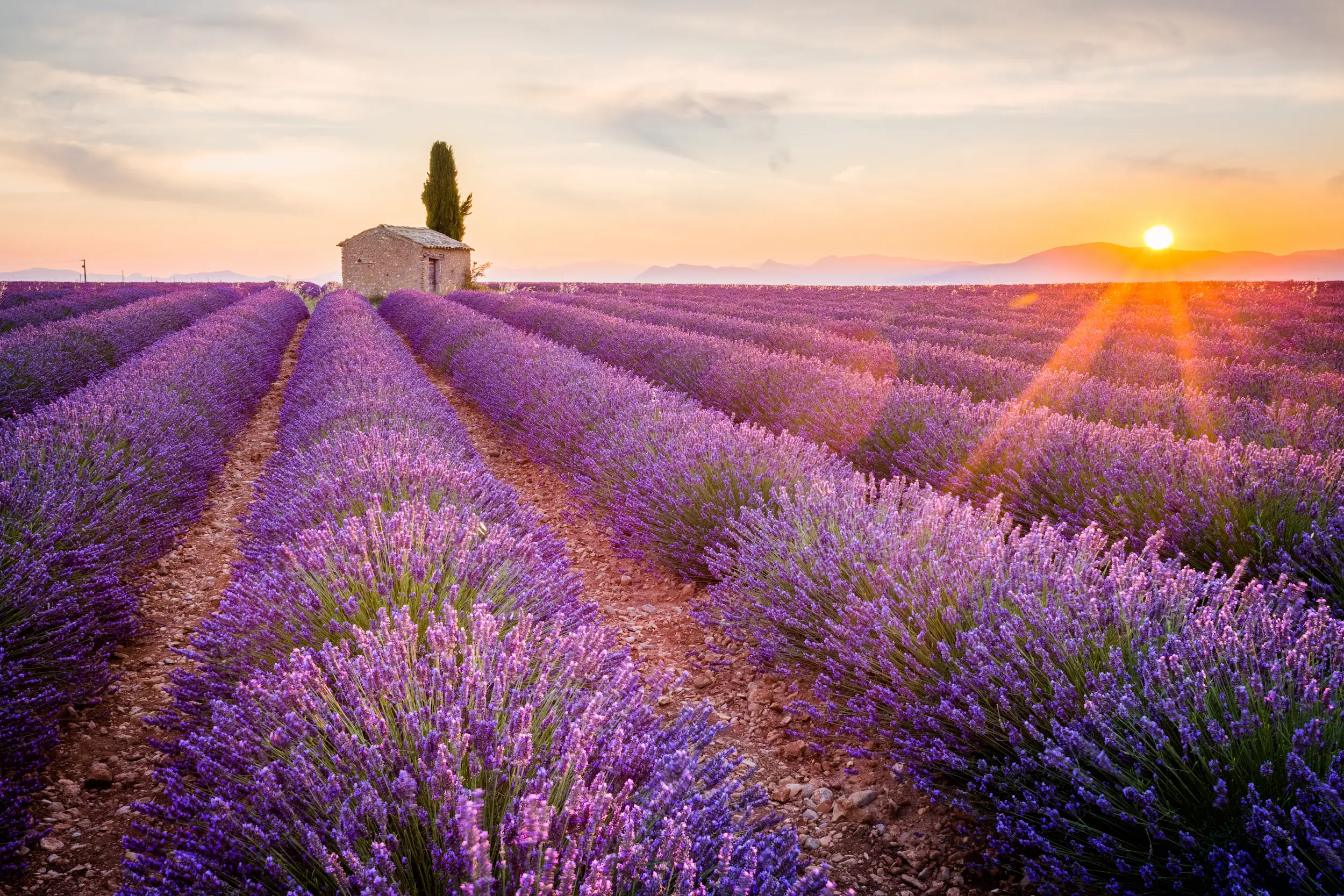
Aix en Provence
Aix en Provence is a warm city baked into the Provence-Alpes-Côte region of Southern France. Often referred to as simply ‘Aix’, this city is a starting point for traveling the Provencal region. Aix is set amongst a backdrop of rambling vineyards, quaint villages, and the imposing Sainte-Victoire mountain range. It’s no surprise that artists like Cézanne have devoted lifetimes to painting this landscape. Aromatic lavender fields in the north blossom once a year with a scent that defines the French countryside. Head south and you’ll find the rocky Mediterranean shore with dramatic Calanques cliffs and clear blue waters. With the sun out nearly all year round, locals live the epitome of the Mediterranean lifestyle. Wander through narrow medieval streets, shop at lively marketplaces, and enjoy a glass of rosé on a cafe terrace beneath the gentle Provencal sun. From old-world architecture and bubbling fountains to refined galleries and leafy parks, this leisurely city has everything you could ask of a French vacation.

Learn About Aix en Provence
Build Aix en Provence Trip

Geneva
Switzerland’s second-most populous city, Geneva is a place where languages, cultures, and institutions have converged for hundreds of years. Here, diplomacy and sophistication play a central role. Formerly home to the headquarters of the UN, Geneva still hosts the International Red Cross, World Trade Organization, and World Health Organization. Lake Geneva, the largest body of water in Switzerland, dominates the surrounding landscape with its calm waters and brooding presence. By the lakeside, the imposing Jet d’Eau blasts water 140 meters into the air for most of every day. As you stroll through the city’s enchanting old town, you'll find its winding streets dusted with antique shops, ancient architecture, galleries, and world-class restaurants. Centuries of influence from countless cultures have given Geneva a special, complex identity. Travelers here can spend hours sampling food and drink from across the world. Or, simply sit by the water, and sip an Espresso while you soak up Geneva's unique and cosmopolitan vibe.

Learn About Geneva
Build Geneva Trip
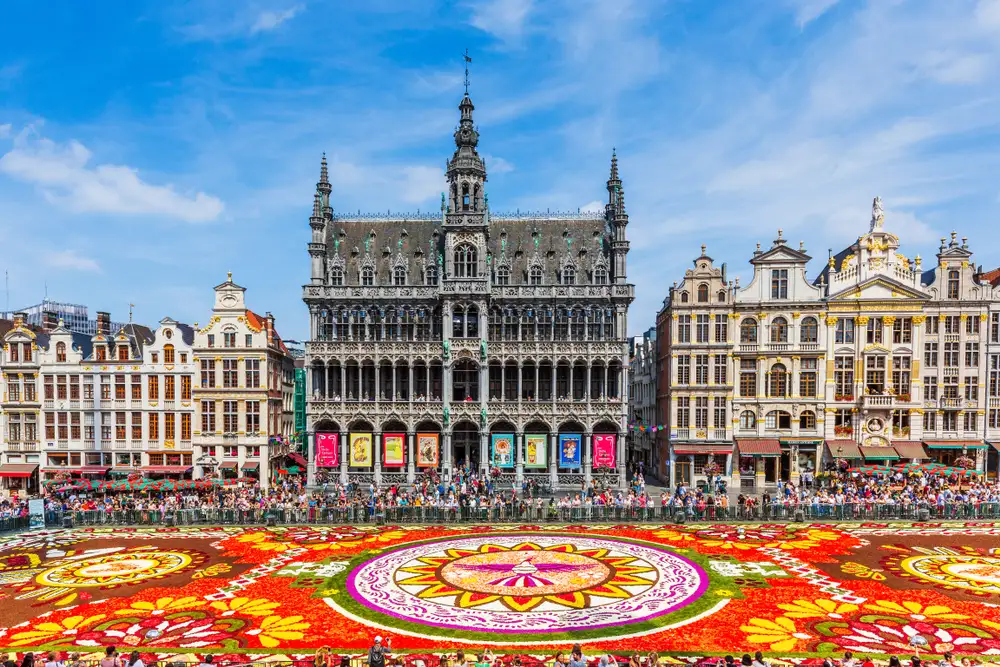
Brussels
It feels as though everything in Brussels is tinted with gold. From the gilded rooftops of the old houses on the Grand Palace to the foil-wrapped bonbons piled in chocolatier windows, Brussels seems to sparkle and wink at you around every corner. Aside from the lustrous architecture and Trappist ales, this shiny city is probably still best known for its iconic street food options: salty, golden fries, and fluffy, honey-colored waffles. While a major political center, home of the EU and NATO, don’t be fooled by Brussels stern ‘Eurocratic’ facade. Brussels revels in cheeky humor and mischief. So much so, Brussel’s beloved mascot, the ‘Manneken Pis’, is a statue of a small child urinating into a fountain. The city takes great pleasure in dressing this statue in festive-themed costumes. It’s no surprise that the artist Magritte, one of the great visual tricksters of the 20th century, called Brussels home. After a few days exploring the city, and taking in its sights and scenes, you’re sure to come away smiling.

Learn About Brussels
Build Brussels Trip

Paris
The magic of Paris is undeniable. This is the most romantic destination in Europe, and surely the number one bucket list destination of all time. If you want to say you've traveled, you have to visit Paris at least once. Along with classic must-sees like the Eiffel Tower and the Sacre-Coeur, there is so much to see and do in Paris that it helps to narrow it down by interest. Fashion and shopping enthusiast? Look no further than the Galeries Lafayette, Avenue des Champs-Élysées, or the Marais. Art aficionado? Once you're done with the Louvre, make a start on the Musée d'Orsay. History buffs won't be able to walk a block without uncovering a monument to Napoleon or Louis XIV. If you visit Paris with a foodie, be warned — you'll gaze in a lot of patisserie windows, and sample your weight in croissants. Because Paris always has so much on offer, it never grows old. At dusk, as you stroll the wide boulevards past Haussmann apartment buildings and sharply dressed Parisians, or gaze down at the city from the hill at Montmarte, you might find yourself saying 'Paris Je t' aime'. This is, after all, the City of Love.

Learn About Paris
Build Paris Trip

Nice
Nice sits at the center of the French Riviera, shaped by golden light, gentle sea breezes, and the striking blue water that frames the coastline. The long waterfront promenade forms the city’s front porch, a place where the curve of the bay, the sweep of the sky, and the shimmer of the sea create an unmistakable sense of place. The Old Town brings deeper texture with its warm-toned buildings, inviting market squares, and the scenic overlook from Castle Hill. Museums devoted to Chagall and Matisse add a thoughtful cultural layer, while beach clubs and open-air cafés reflect the city’s relaxed, Mediterranean rhythm.Nice is also a natural base for exploring the region, with simple and scenic day trips to Cannes, Antibes, and nearby hilltop villages. With its blend of coastal beauty, cultural highlights, and easy access to the wider Riviera, the city offers a bright and welcoming introduction to southern France.

Learn About Nice
Build Nice Trip

Lyon
Lyon, set at the meeting point of the Rhône and Saône rivers, is one of France’s most rewarding and underrated cities to explore. Often reached easily by train from Paris or the Alps, it’s celebrated for its food culture, lively markets, and beautiful riverside neighborhoods. Visitors can wander the Renaissance lanes of Old Vieux Lyon, climb to the hilltop Basilica of Notre-Dame de Fourvière for sweeping views, and discover the city’s hidden traboules passageways. Spend time in Presqu’île’s elegant squares, browse boutiques and cafés, or explore the revitalized Confluence district along the water. With a rich blend of history, architecture, and everyday culinary pleasures, Lyon feels both polished and welcoming without the crowds.

Learn About Lyon
Build Lyon Trip

Aix en Provence
Aix en Provence is a warm city baked into the Provence-Alpes-Côte region of Southern France. Often referred to as simply ‘Aix’, this city is a starting point for traveling the Provencal region. Aix is set amongst a backdrop of rambling vineyards, quaint villages, and the imposing Sainte-Victoire mountain range. It’s no surprise that artists like Cézanne have devoted lifetimes to painting this landscape. Aromatic lavender fields in the north blossom once a year with a scent that defines the French countryside. Head south and you’ll find the rocky Mediterranean shore with dramatic Calanques cliffs and clear blue waters. With the sun out nearly all year round, locals live the epitome of the Mediterranean lifestyle. Wander through narrow medieval streets, shop at lively marketplaces, and enjoy a glass of rosé on a cafe terrace beneath the gentle Provencal sun. From old-world architecture and bubbling fountains to refined galleries and leafy parks, this leisurely city has everything you could ask of a French vacation.

Learn About Aix en Provence
Build Aix en Provence Trip

Geneva
Switzerland’s second-most populous city, Geneva is a place where languages, cultures, and institutions have converged for hundreds of years. Here, diplomacy and sophistication play a central role. Formerly home to the headquarters of the UN, Geneva still hosts the International Red Cross, World Trade Organization, and World Health Organization. Lake Geneva, the largest body of water in Switzerland, dominates the surrounding landscape with its calm waters and brooding presence. By the lakeside, the imposing Jet d’Eau blasts water 140 meters into the air for most of every day. As you stroll through the city’s enchanting old town, you'll find its winding streets dusted with antique shops, ancient architecture, galleries, and world-class restaurants. Centuries of influence from countless cultures have given Geneva a special, complex identity. Travelers here can spend hours sampling food and drink from across the world. Or, simply sit by the water, and sip an Espresso while you soak up Geneva's unique and cosmopolitan vibe.

Learn About Geneva
Build Geneva Trip

Brussels
It feels as though everything in Brussels is tinted with gold. From the gilded rooftops of the old houses on the Grand Palace to the foil-wrapped bonbons piled in chocolatier windows, Brussels seems to sparkle and wink at you around every corner. Aside from the lustrous architecture and Trappist ales, this shiny city is probably still best known for its iconic street food options: salty, golden fries, and fluffy, honey-colored waffles. While a major political center, home of the EU and NATO, don’t be fooled by Brussels stern ‘Eurocratic’ facade. Brussels revels in cheeky humor and mischief. So much so, Brussel’s beloved mascot, the ‘Manneken Pis’, is a statue of a small child urinating into a fountain. The city takes great pleasure in dressing this statue in festive-themed costumes. It’s no surprise that the artist Magritte, one of the great visual tricksters of the 20th century, called Brussels home. After a few days exploring the city, and taking in its sights and scenes, you’re sure to come away smiling.

Learn About Brussels
Build Brussels Trip
prev
next


 Map of Your Itinerary Route
Map of Your Itinerary Route
Zoom In to the cities to see your itinerary in more detail


 4.8
4.8 









